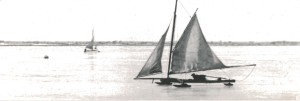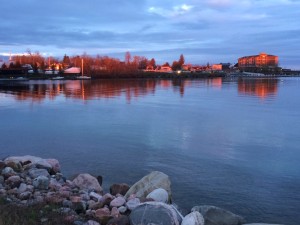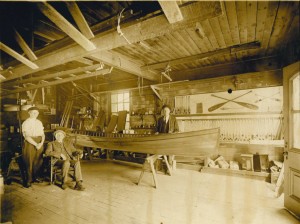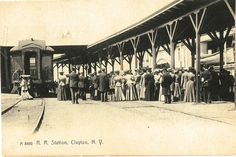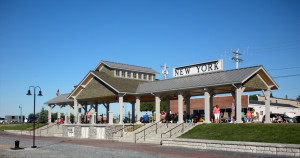The Thousand Islands of the St. Lawrence
“The beauty of this noble stream at almost any point, but especially in the commencement of this journey, when it winds its way among the Thousand Islands, can hardly be imagined.”
Charles Dickens, 1845 Corbin’s River Heritage
******************
The majestic St. Lawrence River was a part of the history of the North American continent centuries before the Village of Clayton began to grow along its shore. This highway from the sea brought Father Simon LeMoyne on his explorations of the interior of the continent.
French fur traders paddled their bateaus across its surface and wrote their journals of its beauty, while some built cabins and remained. Some families in this area still bear their names. This is the land of John LaFarge, James and Vincent LeRay, Alexander Macomb, Peter Penet and Elisha Camp, all of whom were instrumental in the settling of northern New York.
 (photo credit the Corbin Collection, T.I. Museum)
(photo credit the Corbin Collection, T.I. Museum)
Wars swirled through the valley; the French and Indian War, the American Revolution and the hostilities with Great Britain in 1812. Before the arrival of the white man, this area was the domain of the Native Americans. In fact, the site of Clayton was once known by the Algoquins as “Wateringhra-Guentere” (“fallen fort”). Growth of the settlement brought with it the inevitable name changes: “French Creek”, “Cornelia”, and finally “Clayton” for John M. Clayton, a Whig senator from Delaware.
The virgin forests made lumbering a natural occupation for the first settlers, and shipbuilding soon followed. Clayton was the center for the construction of the schooners and ultimately the steamers that opened the Great Lakes to commerce. Since its official incorporation in 1872, the village has grown into a small manufacturing center, as well as becoming the focal point of the tourist business which has developed around the Thousand Islands.
 (photo credit Corbin Collection, T.I. Museum)
(photo credit Corbin Collection, T.I. Museum)
The Village of Clayton represents the fulfillment of the dreams of those who sought a better life after America had cast off English rule. It is a community of neighbors who have a sincere respect for the past, a recognition of the necessity for change if there is to be progress, and the determination to live in harmony with both. They are proud of their heritage and secure in their future. Those families who first carved homes in the wilderness would have been proud of Clayton today.
 (photo credit William Bender Collection, T.I. Museum)
(photo credit William Bender Collection, T.I. Museum)
HISTORICAL DOCUMENT: By-Laws of the Village of Clayton – Adopted May 22, 1872 (PDF – 651.2 KB)

